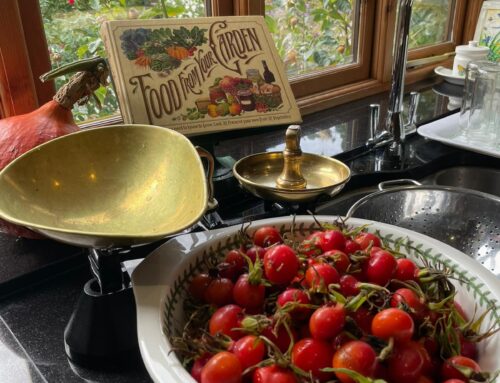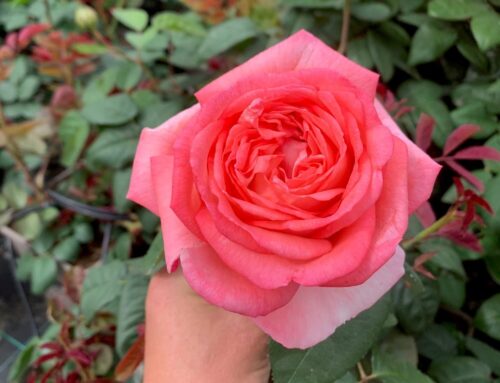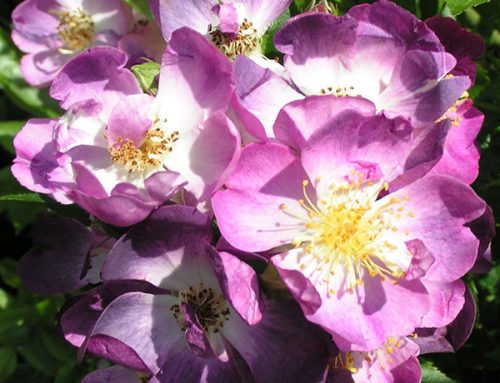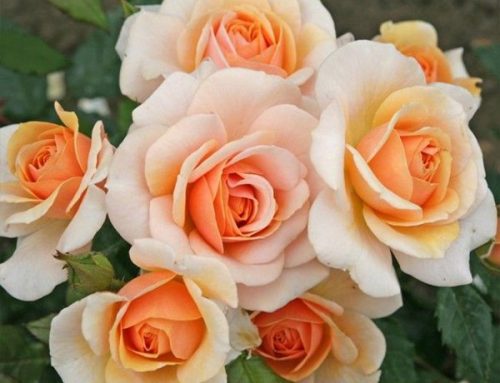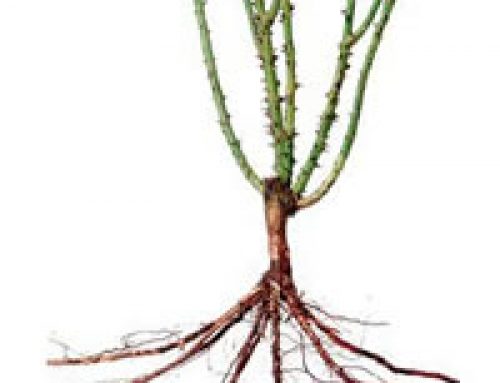Going Peat-free to Protect our Future
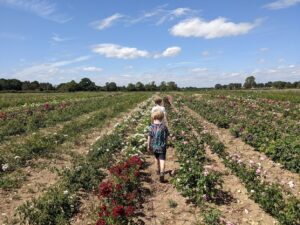
Next generation: Trevor’s grandsons explore the rose fields.
Earlier this month, we welcomed the opportunity to speak to Ben Spencer, Science Editor at the Sunday Times, about the importance of going peat-free.
The environmental damage of using peat in horticulture has long been documented, but a report published by the Wildlife Trusts in 2022 revealed that failure to instigate a ban on the use of peat resulted in around 31 million tonnes of CO2 being released between 1990 and 2022.
We know digging up peatlands for use in gardens is both devastating for wildlife and a huge source of carbon emissions. However, the Sunday Times reported that despite an outright ban coming in for professional growers by 2026 (a deadline which has already been pushed back numerous times…), just 17% of nurseries are currently completely peat-free, with only half feeling they are on track to be peat-free by the new extended deadline.
Making the change
Having been peat-free for five years, we understand the financial, and practical, challenges of making the change. The alternatives are still, disappointingly, expensive, and it can take some trial-and-error to find the right compost-mix for your plants. Roses are naturally very thirsty and need plenty of nutrients so finding ways to sustain water-retention, while maintaining good nutrient levels in the soil, was key. We found a mix of bark, wood chip, coir and a wetting agent – H2Gro – worked brilliantly.
The costs of potting-up our roses are now considerably higher than they were half a decade ago. But considering the environmental cost of the alternative, it was clear we couldn’t continue to contribute to the loss of such a vital natural habitat and key resource in the fight against climate change.
Future-focused thinking
It’s a somewhat bewildering juxtaposition that plant growers and garden lovers are contributing so heavily to the loss of our precious peatlands. But prohibitive costs, lack of clear policy, and a knowledge-gap about alternatives, are all sadly hindering many from switching to substitutes. And of course, the longer we hesitate the more irreversible damage is done.
Professional growers and horticulturalists need to be leading the way, to show that we can grow and garden without peat. There are great alternatives out there and, five years in, we are proof that even the most fastidious roses can – and do! – thrive in other soils and composts, as they have done for millennia. Growing roses doesn’t have to cost the earth. If we want our gardens to be enjoyed by future generations, we need to make the changes necessary to reduce the environmental impact of what we do, and safeguard these essential natural habitats – and the wildlife that flourishes within them – by cutting out peat for good.
Top tips for ‘Growing Green’
From going peat-free, to using recyclable taupe pots and compostable natural packaging – ensuring our roses are grown, packed and distributed in as environmentally friendly a way as possible is something we pride ourselves on at Trevor White Roses. If you’re keen to ‘grow green’, here are some simple ways to purchase and plant roses sustainably.
1. Use a Peat-free Compost
Roses need plenty of water and nutrients so a good soil-based compost like John Innes no 3 works wonders, particularly if planting in pots.
Well-rotted manure or a garden compost mixed in the with the soil should also give your roses a healthy kick-start. Make sure you water well during dry spells and deep mulch every spring, this will help retain water and suppress any weeds. Feed twice a year on heavy soils (March and June), and more on lighter soils with a good rose fertilizer such as Empathy After Plant Rose Food or Organic Bonemeal.
2. Buy Bare Root
Bare root roses are dormant plants, lifted and dispatched between November to the end of March. Stems are approximately 6 to 12 inches long and the roots are bare, meaning without soil.
Bare root roses use no plastic containers or compost, and don’t need to be watered after lifting so are much greener to produce. They’re also much lighter than potted roses so more environmentally friendly to transport too. Find out more about the benefits of buying bare root here.
3. Decrease the use of chemical pesticides
Pesticides are usually indiscriminate, and often kill organisms beneficial for roses along with the pests, such as the pest’s natural predators. This can lead to a cycle of worsening pest outbreaks.
Try using cultural and biological controls instead: there’s a great guide on the RHS website here. And while we know it can be tempting to obliterate every pest and sign of disease on your rose at first sight, try to accept some level of plant damage. As the late, great Peter Beales used to say, ‘What’s a few spots between friends?’.
4. Plant for wildlife
All roses are of course fantastic for wildlife, but some are particularly alluring. Single or semi-double roses with an open habit are irresistible to bees and other pollinators – if you can find varieties that repeat flower, with a strong scent all the better! See our list of roses which are attractive to bees here. Roses which produce hips are also fantastic for birds and other wildlife, offering a valuable nutrition during colder food-scarce months. You can find a stunning collection of hip-bearing roses here.
5. Support peat-free nurseries and growers
The RHS recently published a list of all the peat-free growers and nurseries within the UK. Check out who is growing more sustainably in your local area here: List of peat-free nurseries in the UK / RHS Gardening.

